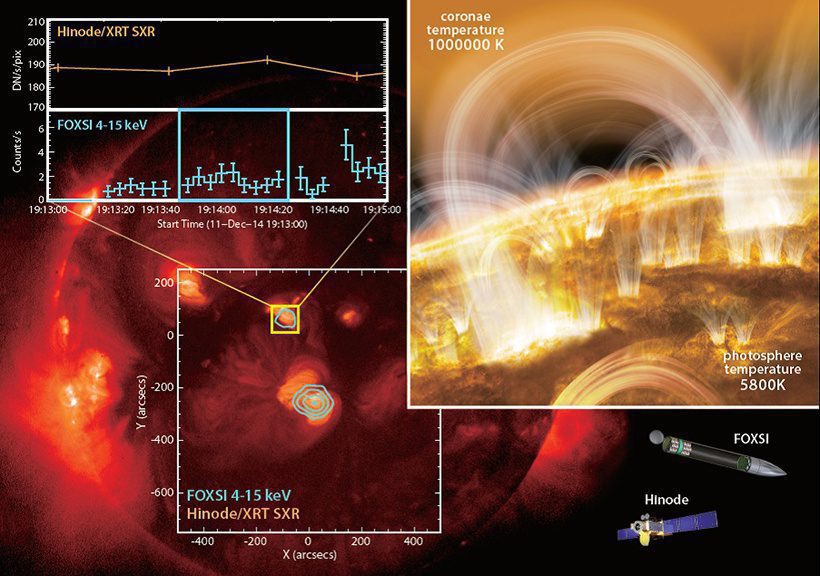
An international research team led by Dr. Shin-nosuke Ishikawa, project research fellow of the Japan Aerospace Exploration Agency (JAXA), succeeded in detecting the subtle signs of nanoflares in a region of the solar corona where no discernible flare activity was taking place. The finding was made by a combination of hard x-ray data from the FOXSI (Focusing Optics X-ray Solar Imager) sounding rocket experiment and data from Hinode solar observatory.
The frequent occurrence of nanoflares has been regarded as a promising agent for maintaining the solar corona at a high temperature of several million Kelvin. The result from the research group is expected to put strong constraints to theories accounting for coronal heating. The results will be published in Nature Astronomy.
Photo Credit: National Research and Development Agency, Japan Aerospace Exploration Agency (JAXA), Inter-University Research Institute Corporation, National Institutes of Natural Sciences, National Astronomical Observatory of Japan (NAOJ)
